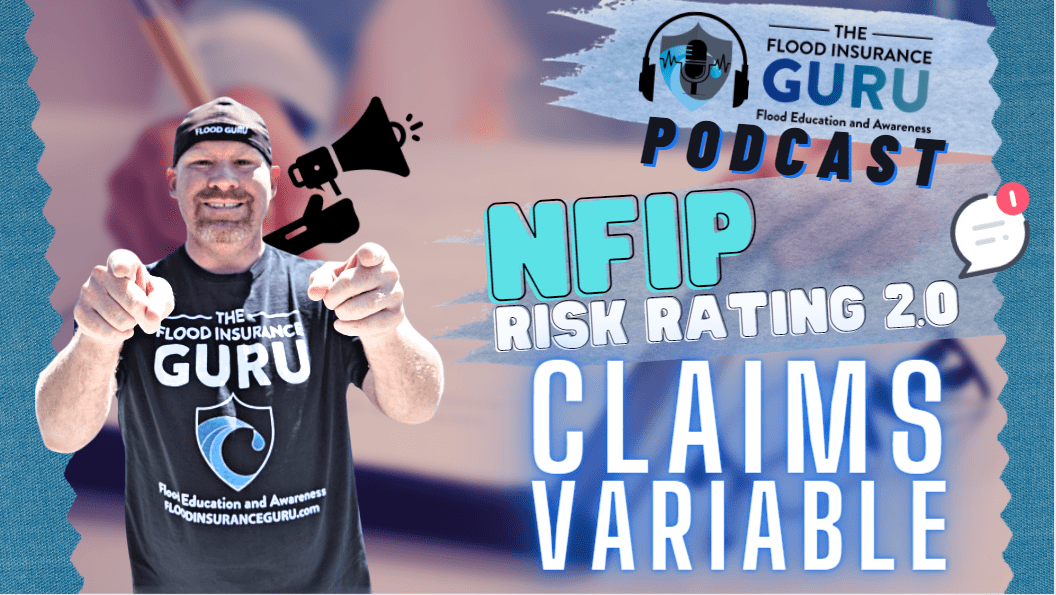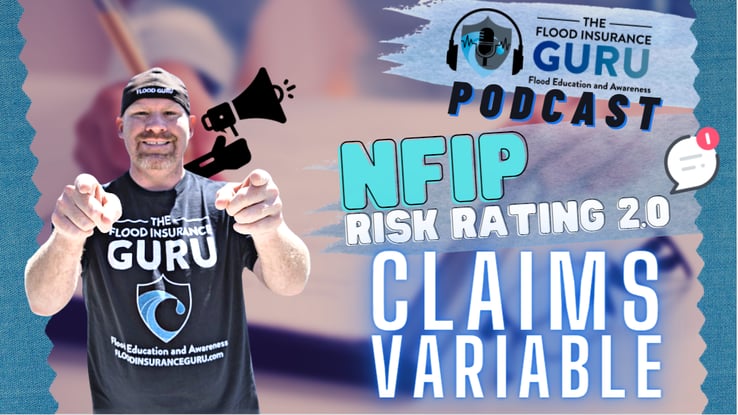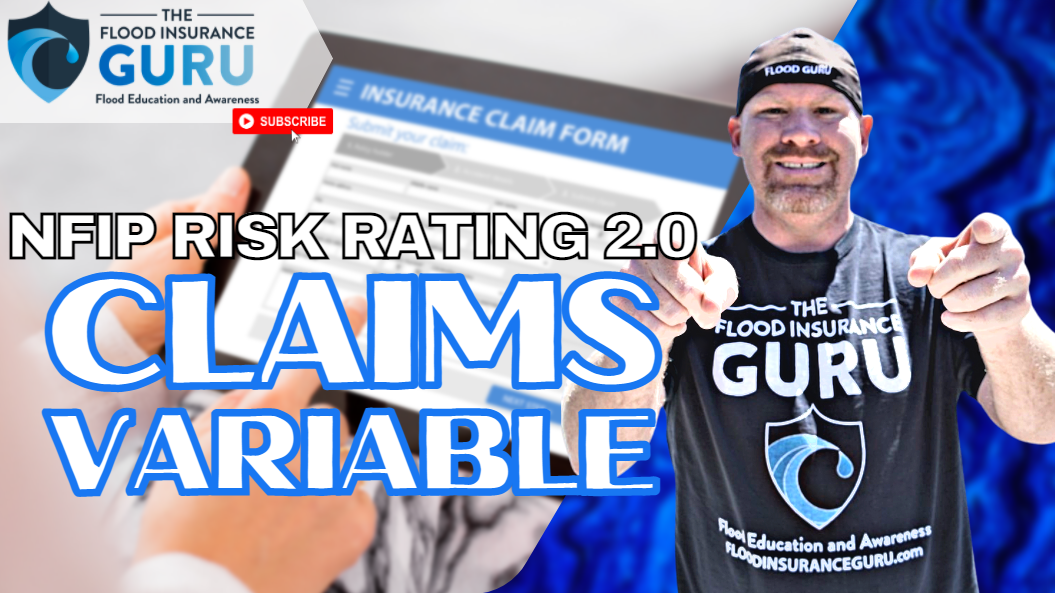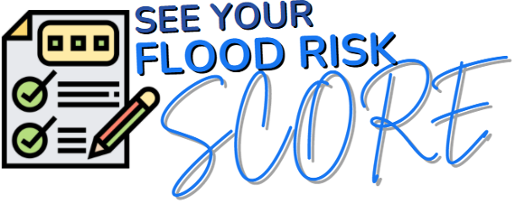
In today's podcast, we're going to cover everything that concerns claim variables with the federal flood insurance with the National Flood Insurance Program (NFIP). A lot of things are expected to change with the National Flood Insurance Program (NFIP) and we're not just talking about flood insurance premiums with the new Risk Rating 2.0 program scheduled to arrive this October 1st, 2021. These things will definitely impact your overall flood insurance policy and understanding how your flood risks.

For now, we want to talk about flood insurance claim variables and how it can impact your rates. We're talking about how claims can either give you an increase or a decrease depending on the situation. To understand the weight of the new Risk Rating 2.0 program's impact, we want to look back first.
Claim Variables 1.0
Since we're still in this old and tried version of federal flood insurance from the Federal Emergency Management Agency (FEMA), we're still not experiencing the new things coming to flood claims with the Risk Rating 2.0.
To be honest, claims don't really have that much of an impact on the cost of your flood insurance, flood insurance rates, or premiums. This is the case for homes across the country and unless we're talking about severe repetitive loss properties — which are included in a special program — we're not really seeing any impact of flood insurance claims on the overall cost of flood insurance and understanding flood risks.
So then you might wonder, what's the change?
Claim Variables 2.0
With this new program, we could say that everyone is going to receive your get-out-of-jail-free card. However, when you have a flood insurance claim on your property, that's when things could change.
You see, when it comes to flood insurance with FEMA and the NFIP, they can't really increase flood insurance rates above a certain percent or amount. This is one of the things that we'll still see with the Risk Rating 2.0 wherein the increase on premium rates can't go higher than 18%.
Now, we mentioned that basically that get-out-of-jail-free card simply your way out of your previous flood claims made. In the NFIP 1.0 version, it's a big deal and a big hit on your premium rates if you have more than one prior claim made in the last 10 years.
With the NFIP 2.0, this changes, and basically, we're going to hit the reset button and start with a clean slate. Call it what you want: the purge of claims, tabula rasa of flood claims, or changing the diaper of flood insurance claims with FEMA.
— You can listen to this full episode while reading by clicking the "play button" —
This means that when it comes to flood policies claims, basically FEMA will ignore the history of flood claims until you have that first flood claim under the new Risk Rating 2.0 program. This is when flood claims are considered under the types of flood risks that determine where your rates will fall in the good or bad.
When you file a claim within the Risk Rating 2.0, FEMA does what's called a "20-year lookback" where they look at all the claims you've received in the last 20 years. So if you were to file a claim in 2022, FEMA will take into account the claims you've made since 2002 and this will be stacked on top of your current claim. So if you did a claim in 2003 and then another one in 2004, you're going to be classified under Claim Variable 3.
Generally, this means the more claims you have in the last 20 years, the higher your claim variable is. The higher the claim variable is, the higher your rates can become since it's important to keep in mind that flood zones won't really have the same impact on rates like we do now when it comes to the new program. One could say that flood zone designation in flood insurance rate maps simply lets you know whether or not you're to do a mandatory flood insurance purchase or not.
Risk Rating 2.0
The claims variable is just one of the new things that will be helping you build the fingerprint of flood risk with federal flood insurance and the Risk Rating 2.0.
This new program is equity in action and will consider a lot of old and new rating factors when it comes to flood insurance. These factors and conditions are the things that the Risk Rating 2.0 will consider and can also help you determine if you're going to get a premium increase or rate increase just by looking at your property details.

We'll talk more on the specifics in our future blogs on this, but to give a brief preview here are the things that impact your rate which will stay with the Risk Rating 2.0:
- Flood zone designation based on community flood maps.
- Distance of the property to a body of water.
- Policy assumption and policy transfer.
- The grandfather rule.
- Pre-FIRM subsidies or Pre-Flood Insurance Rate Map discounts.
The new things that will also impact your rates. These things are more of focus on individual properties, so there's a fingerprint of flood risk when it comes to the Risk Rating 2.0. This is to say that your rate won't be the same as your neighbors:
- Types of flooding that your property experience.
- Flood frequency impacting the community and your property.
- First-floor height or distance of the first livable area to grade (ground).
- Elevation of the structure or the property itself.
- Flood Risk Mitigation Measures made on the property.
Again, we'll talk more about these in future episodes, but for now, we want to focus on the impact on flood coverage so that property owners and insurance agents alike can get an understanding of this. One step at a time.

If you have any questions on how to file a flood claim, Risk Rating 2.0 changes, or what's your flood risk score, click below to reach us.
Remember, we have an educational background in flood mitigation which lets us help you understand flood risks, your flood insurance, all the updates with it, and mitigating your property long-term.


